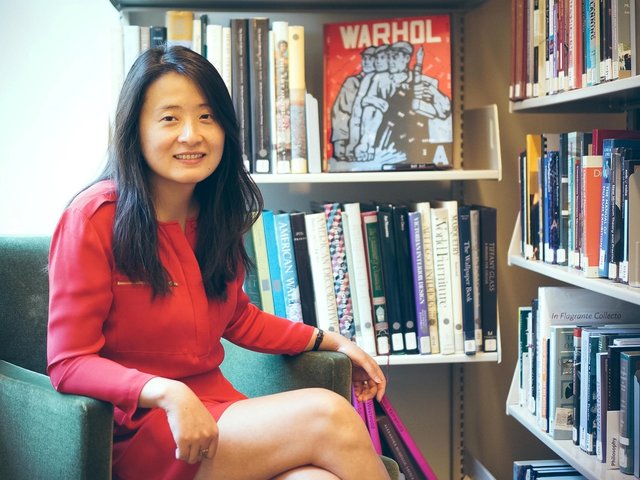China’s art market
While many Westerners say that they do not fully understand the Chinese art market, recent data (such as Clare McAndrew’s study for The European Fine Art Fair, Maastricht, published in March) suggesting that China has become the world’s second largest art market was not greeted with surprise. Statistics from China also confirm that there has been significant growth.
So, there is consensus that the Chinese art market has entered a new stage of development. Thierry Ehrmann, the chief executive of art database Artprice, even claimed that this represents a new turning point in the history of the global art market.
But what is driving Chinese collectors? Partly, it is the fact that cultural treasures have, in general, not passed down through families. So the market is the main way, indeed almost the only way, to acquire works of art.
China is experiencing the fastest growth in personal wealth in the world, driven by an investment boom that is leading to extraordinary social changes. The global financial crisis of 2008 did nothing to halt this momentum. In fact, the government’s loose monetary policy in the year that followed, and the expectation of inflation that resulted, lured even more money into the art market.
The one area that was adversely affected was, of course, Chinese contemporary art. Speculative capital swiftly retreated from this sector and, instead, moved to Chinese paintings and antiques, generally considered safer investments.
In 2010, as the Chinese government tightened its macro-economic policy, the art market remained attractive, more so than the stock and real-estate markets. The value of the auction market, gallery market and other related art businesses, such as art funds, increased by Rmb38bn ($5.8bn), Rmb20bn ($3bn) and Rmb50bn ($7.6bn), respectively, according to our research.
Private collectors, who play a large role in the Chinese art market, are nonetheless affected by the wider economic situation. The vast majority of collectors bidding at auction have made their money in the major growth industries: real estate, finance, energy, transportation, commodities and the high-tech sectors, which are affected by the international economy and regulations, as well as the Chinese government’s industrial policies.
Not all the factors driving the Chinese art market are well understood, especially outside China. Personal interest and the desire to display wealth play significant roles, and partially explains the premium on decorative works, with connections to cultural icons. The recent popularity of the court arts of the Qing Dynasty reflects the great interest the rich have in the former Imperial family, a symbol of supreme status and extraordinary wealth.
Works of art have long been considered a good choice of gift in a society with a strong emphasis on relationships and social position (China is a highly gift-oriented society). Many buyers have a strong preference towards well-known masterpieces, as well as works sold at public auction where the sale price is published, which means the price and cultural value of the works is explicit to the person receiving the gift. Some take this a step further by attaching the receipt to the work they are giving. Buying art as a gift is a crucial factor in the strength of the market for medium-priced art, in particular Chinese paintings and antiques.
A developing characteristic of the Chinese art market, evident in the 2010 figures, is the increasing presence of institutional investors. These come from a number of industries including finance, real estate, manufacturing, energy and construction, and from a broad geographical base, with north-western, north-eastern and south-eastern China becoming the new growth areas, as well as the wealthier coastal cities. Art investment funds are also rapidly emerging. At present there are 19 art funds actively investing in mainland China, ranging from Rmb30m ($4.6m) to Rmb200m ($30m) in size. A further 11 funds are raising capital.
This has brought a new dynamic to the art market. First, institutions with ample capital at hand are “marginalising” the individual buyers (for example, cultural treasure collectors) by bidding aggressively. Second, private companies and art funds are keen to focus on rare works, with established cultural value and high social recognition. As a result, prices for works by the most famous artists, in particular for their best-known masterpieces, have soared. In 2010 alone, there were 22 transactions above Rmb100m ($15m).
Meanwhile, Chinese art museums have only received small increases in funding, which means that they have limited market participation and impact. Private museum collections have enjoyed rapid growth in recent years, but are concentrated in relatively developed areas such as Beijing and Shanghai. But these collections are still at a very early stage of development, and there are many areas that need further improvement, including collections management and public engagement.
Although the Chinese art market has developed rapidly, its performance is mainly in terms of size, not quality. In 2010, the most actively traded sector in the Chinese art market was still traditional works rather than contemporary art—let alone works by international artists. The contribution of Chinese buyers to contemporary culture as well as to the international art market is small.
The problem for those selling contemporary art is that very few collectors or institutions in China have a mature understanding in this field. Many collectors, particularly newer buyers, struggle to judge the artistic value of contemporary works.
The fact is, against the backdrop of globalisation, the creation of contemporary art is not only the expression of individual will or of a local reality, but reflects the collision, communication and integration of different cultures. As a result, to understand Chinese contemporary art, collectors need to be familiar with art in both the local and global context, and actively engage in broad cultural discussions without losing their individual perspectives. Of all the issues that face the Chinese art market, addressing this is the highest priority.
Professor Zhao Li, Department of Art, Chinese Central Academy of Fine Arts, Beijing



